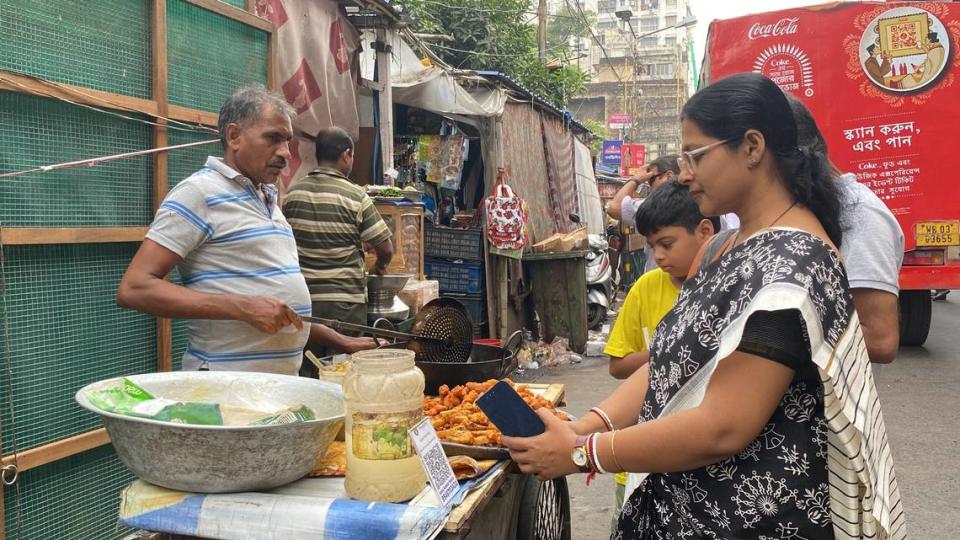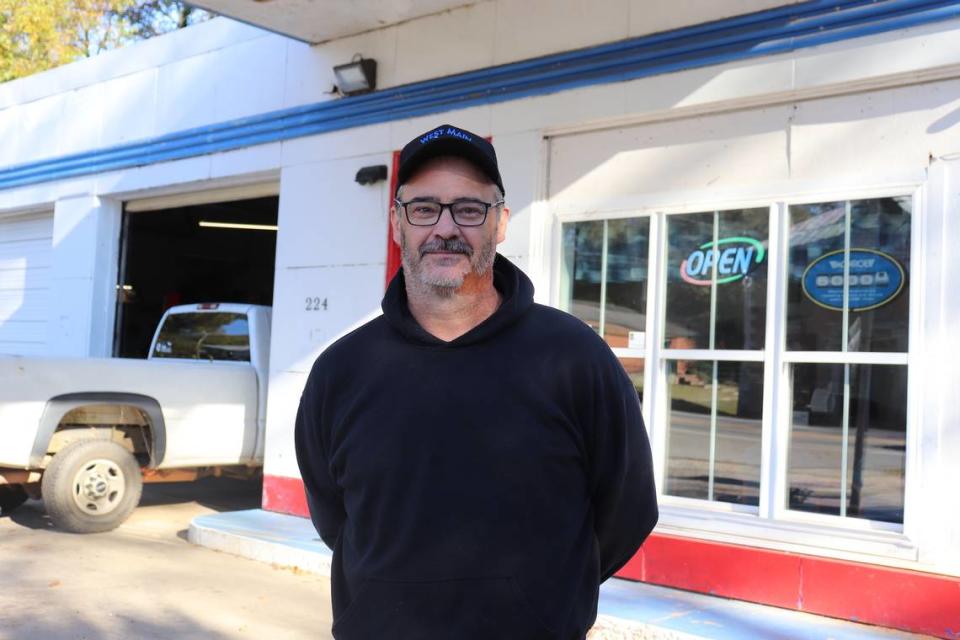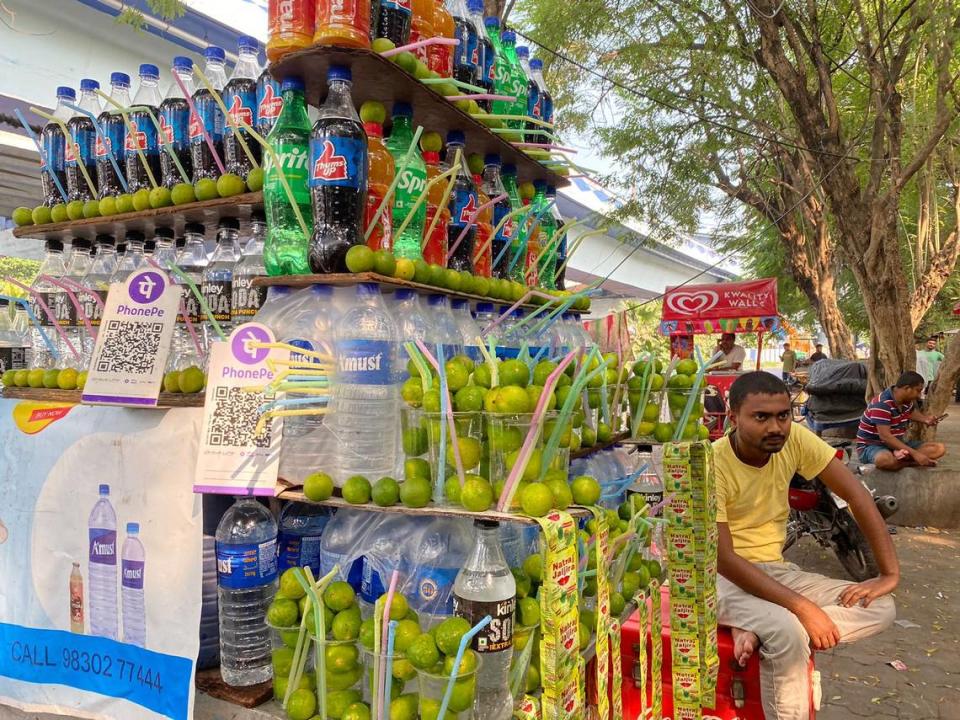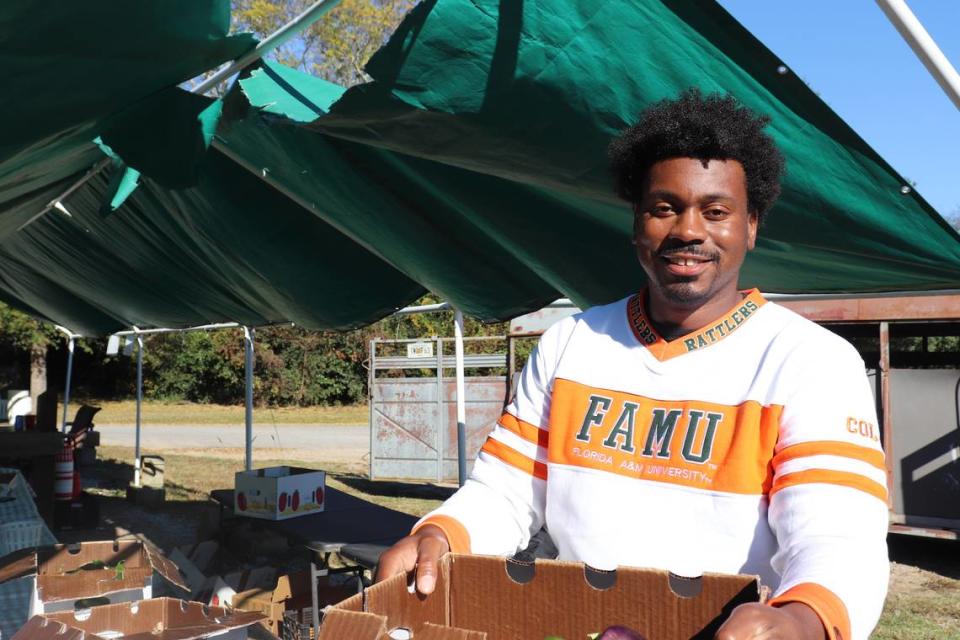Paying with your phone: Georgia and the rest of the US play catch-up as India surges ahead
Gene Bradford opens up his shop, West Main Auto Repair, each morning at 8 a.m in Lexington, Georgia. He’s lived in the small, close-knit community of Oglethorpe County for years now, and has come to know his customers’ personalities, mannerisms – and preferred forms of payment.
Most pay with cash, credit cards or checks. They rarely use Apple Pay on their phones, or even seem to notice the sign that says they can.
The opposite is true across the world in Kolkata, India, where digital payments are the rule rather than the exception. In a busy part of the sprawling city, local street food vendor Sukhdev Kumar gets paid instantly with the scan of a QR code for his papri chaat, a popular snack he sells from a small cart.
“Several customers demand online transactions,” Kumar said. “If I had not had it then I would have lost business.”

Their experiences reflect larger realities about online payments in their countries and the world. In India, the most populous nation and a rising economic power, the technology is used widely by large retailers, small shops and street merchants alike.
But mass adoption has been much slower in the U.S.– even in Georgia, where Atlanta is a thriving financial technology hub.
In 2022, India accounted for 46% of all global real-time payment transactions, with nearly 89.5 billion of them, according to a recent report by ACI Worldwide and GlobalData. Other leaders include Brazil, with 29.2 billion transactions, and China, with 17.6 billion. The United States recorded only 1.8 billion.
The technology faces numerous obstacles in the U.S. Many Americans still can’t adopt digital payment systems because of limited access to broadband and financial services like bank accounts – which underscore broader societal inequities.
Others, like Hazel Sanders of Hazel’s Hair Salon in Lexington, are skeptical about the technology or don’t know how to use it.
“I like the way it is. I like old school. I like cash and checks,” Sanders said. “I’ve heard of a lot of people getting taken advantage of by other payment systems … I just don’t trust them.”

Cashless systems thrive in India
QR codes like the one atop Kumar’s cart have revolutionized Indian commerce, seamlessly linking millions of individuals through a real-time, cashless payment system known as Unified Payments Interface, or UPI.
UPI was developed almost a decade ago by the National Payments Corporation of India (NPCI) to allow transactions between people, merchants and banks. In August, data from the organization shows, UPI surpassed 10 billion transactions. It has approximately 330 million users and accounts for over 75% of digital retail transactions in the country.
Harish Prasad, the head of banking for India at Fidelity National Information Services Inc., said UPI has firmly entrenched itself as the predominant payment mode for millions of Indians and is growing every year. “UPI has been at the front and center of the remarkable ascent of electronic payments,” he said.
Dilip Asbe, managing director and CEO of the national payments corporation, credited the country’s policymakers for its leading position in the global digital payments market. While his organization has been at the forefront “building innovation led-approaches,” he said, “unless the country decides to adopt, it will not have an impact.”
Asbe believes India’s ability to build a diverse and compatible “ecosystem of banks, fintechs and start-ups” has played a pivotal role in the country’s success.
The nation’s efforts to improve broadband penetration, and get around connectivity issues, also play a part, experts said.
While the United States ranks higher for broadband, India is making progress through initiatives like the BharatNet project, which aims to connect all of the country’s rural areas to the internet. UPI users also have a way to get around connectivity issues: They can process money transfers offline by simply dialing “*99#.”
As UPI has caught on, it’s built upon itself. It’s now used by so many people in all socioeconomic groups that it’s become the norm.
Outside a park in Kolkata, a man selling fresh coconut water had a Google Pay sign on his bike. Nearby, a vegetable seller sitting on a blanket displayed a QR code near beans and peppers. And at a roadside pastry and snack shop on the outskirts of Kolkata, a QR code peeked out from behind the cakes.
In India’s southern city Chennai, small cake shop owner Roslyn, who goes by one name and started her business eight months ago, said only one fourth of her customers carry cash now. “No one is actually carrying cash nowadays,” she said.
People use UPI for services as well as goods.
“Within three to five seconds, a customer can complete the payment and have their (insurance) policy renewed or purchase a new one,” said Chatti Babu, chief information officer of Star Health and Allied Insurance. “...Whether you are in the remotest part of the country or you are in the heart of the financial capital of Mumbai, things are the same.”
Babu recalled traveling through a remote village in Tamil Nadu and coming across a woman in her late 60s selling coconut water. She had three QR codes set up: one for her eldest son in college, another for another son and the third for herself. She had no problem adapting to this “new age method of payment,” he said.
“It means you don’t need an education. All you need is awareness.”

In the U.S., barriers get in the way
Experts point to a host of hurdles impeding the technology in the U.S.
One important barrier: government rules on matters like open banking and data privacy.
“Regulations within the U.S. versus regulations in more emerging marketplaces tend to be a restrictor of adoption,” said Bob Trotter, associate director of the fintech certificate program at the University of Georgia. “... We’ve gone through the financial crisis in the past because we’ve unregulated the industry, but the regulations can create restrictions in terms of technology growth.”
Another big impediment is the country’s reliance on so-called “legacy systems,” computing software or hardware based on outdated technologies that’s still used by many companies. Such systems are the backbone of many traditional banking operations. Companies with significant investments in traditional payment channels are often less inclined to disrupt their own operations and make the leap into fintech.
Besides corporate and government hurdles, experts said there are serious systemic problems affecting consumers. Wide adoption of this technology would require bridging a digital divide for the 7% of Americans who do not have access to broadband internet, the 4.5% without any form of banking services and the 15% without a smartphone.
Currently, about 24 million Americans, most of them in rural areas, live in digital deserts with no access to broadband. In Georgia, there are 454,950 unserved addresses – about 90% of which are in rural areas, according to the 2022 Georgia Broadband Map. Most states define unserved as areas lacking even very low broadband speeds.
“Connectivity is a huge issue for us here in Georgia, especially having such a vast state from mountains to coastline to all of our farmland,” said Jessica Simmons, executive director for the Georgia Broadband Program.
Although Lexington is considered served, 13% of Oglethorpe County is not. Kendall Strickland, owner of Strickland Pride Produce in Lexington, understands just how tough poor connectivity can be for any kind of digital payment.
“Every so often, a few times a year, I’ll have a few lapses where it’ll take a few minutes … or it won’t do anything at all,” Strickland said.
To close the gap, the Biden administration has launched several nationwide initiatives including the $42.5 billion Broadband Equity, Access and Deployment Program to expand high-speed internet access across the country. Locally, the Georgia Technology Authority is currently in the planning phase for using more than $1.3 billion from the federal program to serve remaining unserved and underserved locations in Georgia.
The issue of “unbanked” Americans is also a complex and difficult problem to solve.
Adults without bank accounts are far less likely to use a payment app, especially when apps like Zelle can only be accessed via a bank account. Even with apps that accept prepaid debit cards, unbanked consumers are less likely than banked consumers to use nonbank payment apps, citing inconvenience, distrust, financial illiteracy and high fees and service charges.
Another challenge: Consumer attitudes
Besides these large systemic problems, Trotter notes that people’s attitudes about financial technology – including distrust –remain significant obstacles to widespread adoption.
From Strickland’s produce stand to Bradford’s auto shop, cash is still king in Lexington, Georgia. A similar phenomenon can be seen throughout the U.S. in rural areas with older demographics.
Although he accepts Cash App and all forms of credit and debit cards, around three quarters of Strickland’s customers pay with cash. Those who don’t are usually under 30 years old, he said.

Down the street at West Main Auto Shop, the “no checks allowed” sign brought over from Bradford’s previous shop still looms on the wall behind him. Bradford has since deviated from this policy, as he has come to learn that checks are the most common form of payment for his customers. Oglethorpe County skews older, and Bradford notes that older people typically aren’t as adept with financial technology.
“There’s not as many young people that live out this way,” he said.
Some of the mistrust around financial technology is rooted in fear of fraud. Older adults have long been targeted for financial fraud and exploitation. In 2017, the Consumer Financial Protection Bureau reported 3.5 million cases of fraud directed at seniors between 70-79 years old.
Many seniors also have a fraught history with financial institutions.
“If you’re old enough to have gone through a run on a bank, or a Great Depression or watching financial institutions fail, you’ll begin to question whether those institutions can be trustworthy,” Trotter said.
In India, however, financial technology has permeated every demographic — from grandchildren to grandparents.
Brijesh Tiwari hasn’t always accepted UPI. He owns a three-generation bookstore called Bookline on Park Street in Kolkata and had to learn more about the method from his son in order to feel comfortable using it.
“In the beginning, it was a bit worrisome and troublesome because of my inability to understand the UPI method and how it works,” Tiwari said. “Gradually, I had to overcome the challenges, learn about the new system of payment, and accept it.”
India’s celebrity restaurateur Riyaaz Amlani, CEO of Impresario Entertainment and Hospitality, said he anticipated a big learning curve for UPI but found it easier to use than he expected. It meant a welcome move away from the “cumbersome and difficult” tasks of handling cash and entering long, complicated credit card numbers.
As for Bradford, he’d love to see such benefits someday. So though his Apple Pay machine mostly collects dust right now, he plans to keep it on his counter in the hope that more consumers start using it.
As part of a new program at the University of Georgia, students in the Cox Institute’s Journalism Writing Lab worked with students from India on joint story projects that link their two countries. The project is overseen by Laura Ungar, a reporter on the global health team at The Associated Press, and roving journalist Sujoy Dhar, founder of the Indian news agency India Blooms News Service, as well as writing lab Director Lori Johnston.

